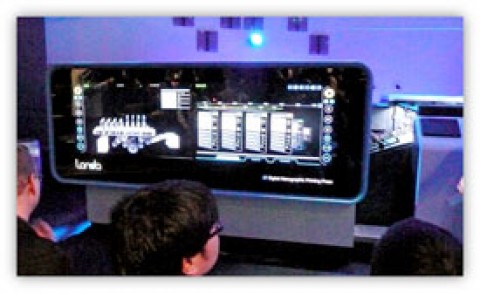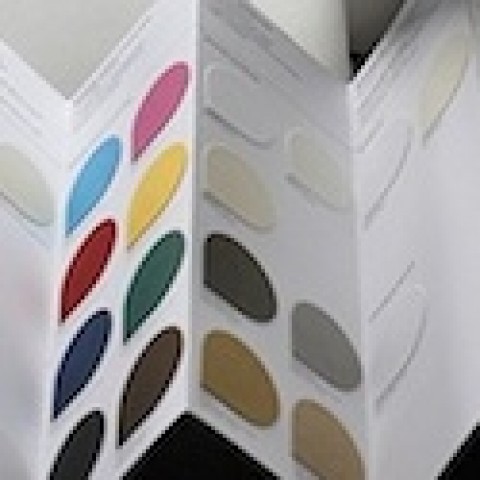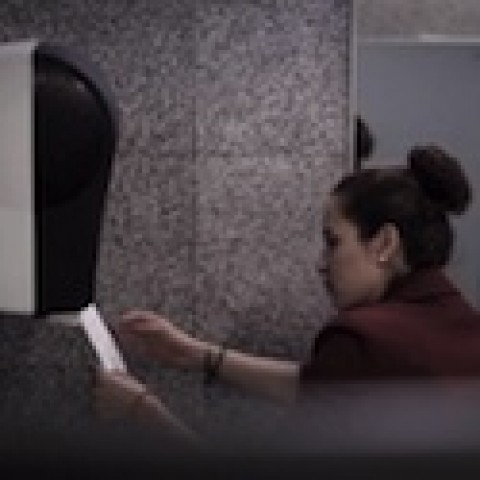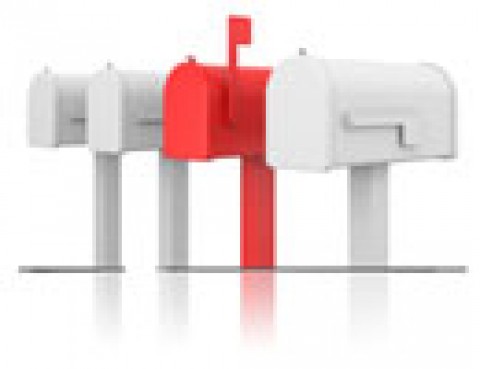Sonny: But they’ll never go for it, pop…
Godfather: I’ll make them an offer they can’t refuse.
— From “The Godfather,”
the greatest movie ever made about direct marketing
One of the most creative and compelling offers that I’ve ever come across was from the CIT Group. (The CIT Group, which consistently does award-winning and highly successful direct mail, is a company that arranges loans for large corporations. The typical loan can be anywhere from $5 to $50 million.)
A few years ago, they sent out a direct mail package to CEOs and CFOs with an incredibly compelling offer. The package included two baseballs, one signed by Mickey Mantle, the other by Willie Mays. The third ball — signed by Hank Aaron — was the offer, and in order to receive it, you had to receive a presentation from the CIT Group. This was a very valuable offer, and an expensive mailing, but their prospects were worth it.
But what made the offer irresistible was this: The CIT Group also included a stand for all three balls with a little plaque under each one bearing the name of the signer. Yes, you could have simply kept the two balls they already sent you and not called for the third. However, you could never display them on the stand without seeing that empty spot — and having to explain it to everyone else.
They won a DMA Gold Echo award.
Why Do We Need Offers, Anyway?
Direct marketing is, above all, the art and science of getting people to do things. Not feel things. Not believe things. Not understand things. (Although these can certainly be important elements in your work.)
Our main focus is getting people to act — and act immediately. Consider this: Even the most powerful fund-raising letter, with the most heartbreaking story, would fail if it only made people feel something instead of doing something about it.
And the single best way to get significant numbers of people to act is with the offer.
How Important is the Offer?
If you look at most direct-mail pieces you receive, it doesn’t seem to be very important at all. Many either have no offer, a weak offer, or they hide the offer instead of making it the hero of the package.
One of my chief complaints is that we spend so much time on the words and pictures, and not enough on the offer. But it is the offer that can influence response to a far greater degree than anything else, with the exception of the list.
There’s a rule that goes like this: If you change the creative, you can multiply response twice over. If you change the offer, you can multiply response fourfold. If you change the list, you can multiply response tenfold.
I believe this is still an understatement. I have been involved in direct-marketing programs where changing the offer lifted response sevenfold and tenfold. I will share these case histories with you later.
What Makes a Good Offer?
There are many variables to consider, and many questions to ask.
It should be something of value, obviously. (And sometimes information can represent the greatest value.) It should be something tangible — a free scarf versus 20% off. Ideally, it should be something the prospect can’t get anywhere else.
However, what I’ve found that is most important is this: If you can tie your offer to your main benefit, it can be exponentially more effective. Let me give you an example.
One of the clients I work for is Brinks Home Security systems. Their key benefit is that they protect your home against break-ins, so you won’t suffer a loss.
The offer I came up with was the Brinks ArmorClad No-Loss Guarantee, and the way it works is as follows. In the unlikely event of a burglary or fire, Brinks will pay your insurance deductible up to a maximum of $1,000.
The offer — you’re guaranteed not to lose money — ties directly in with their key benefit.
The Most Critical Part of the Offer
You might think that the cost of the offer is the most critical element that will influence response. And that if you want to get more response, you simply increase the amount of money you spend on the offer. Not true.
In most cases, the actual cost of the offer has almost nothing to do with response. There are two factors that are far more important.
1. Cost versus perceived value.
It’s not what your offer costs, it’s what value it has to the recipient. In the software business, this is called “value pricing” and it allows them to charge $400 for a disc that costs only $3 to produce.
Let me give you a direct-marketing example.
One of the offers we are testing for Brinks is a “Free Home Security Test.” It’s designed to let homeowners know whether or not their house is protected against intruders. The cost to Brinks is insignificant: All we’re providing is information.
However, that information can be priceless to the right homeowner. As our advertising says, “If it saves your life just once — it’s worth it.”
The perceived value of the offer can also be more subtle. In my previous agency, Bronner Slosberg Humphrey, we did a test to get people to activate their AT&T Calling Cards.
The offer — and the cost to AT&T — are shown below.
- 30 free minutes if you activate now (value: $5.75)
- 60 free minutes if you activate now (value: $11.50)
- 1 free long-distance call, of any length, if you activate now (average value $2.95).
Which offer do you think generated the most response?
The third offer had, by far, the best response — possibly because the value, “I can call anyone? Anywhere? Any time? And talk as much as I want?” was perceived as higher.
However, the actual value of that offer was less than one-third of our most expensive offer (60 free minutes). So not only did we increase response, we lowered the cost per offer.
This example also clearly demonstrates the power of testing.
2. Presentation is everything
You should always present the offer as something of value and something of importance. By the way, if your offer doesn’t have value and importance — you should be looking for a new offer.
- Free is key. Many people believe that “free” is the most important word in advertising and direct marketing. I’m not sure if I completely agree with that. However, when it comes to the offer — free is critically important.
INSIDE TRICK: If you are offering something free — shout it. I will almost always start the headline on the reply card with the word “free.” It will almost always increase response. Plus, I’ll use the word “free” as much as possible within the other elements of the direct-mail package, or within the advertising copy.
- Get specific. Are you offering a travel brochure… or a free 32-page special booklet with 18 color photographs, including everything you need to know before you book your trip? The more specific you get with your offer, the more people will respond to it.
- Make it unique. Chances are, if you think creatively about it, your company can come up with an offer that no other company can duplicate. You may even be able to come up with an offer that “money can’t buy.”
For example, when I worked on the Quaker Direct campaign, we ran a sweepstakes where the top prize was breakfast with the cast of “The Cosby Show.” That was a prize that money couldn’t buy.
However, there is no better example of how to present the offer than the AT&T Winback campaign.
The Direct Marketing ‘Test Laboratory’
When my agency first won the AT&T Winback account in 1989, “winning back” customers was a difficult proposition.
This was the height of the “phone wars.” MCI was offering discounts of 40%-50% on long-distance bills. Sprint was also discounting, but talking about improved quality (remember the pin drop?). And AT&T had the reputation of being an uncaring, expensive ex-monopoly that wasn’t interested in retaining customers.
The first thing we did on this program, which later grew to one of the largest and most successful direct-marketing programs in the world, was to implement a series of tests.
We tested copy. We tested formats. We tested timing. And we tested offers. In fact, we did over 1,000 tests in six years. In some respects, it was like working for a direct-marketing laboratory.
Because of this, I would like to take you through some of the offers we tested and what we learned.
Offer Test #1. Money. Our first offer was $10 off your long-distance bill if you switched back to AT&T. Our reasoning: The customer had left to save money. Here was money to come back.
At this point, we couldn’t (or didn’t) do a version based on the value of the customer — as we would later do with our check packages.
Offer Test #2. Time. Here our offer was 75 free minutes of AT&T long-distance service. This offer was based on a curious misunderstanding that came out of research — people always overestimated how much a long-distance call would cost. Our reasoning was that if we offered them 75 minutes, it would seem like more than $10. In fact, it cost us about the same.
One interesting finding — 60 minutes pulled better than 75 minutes. Why? In a focus group, one person remarked, “I don’t want 75 minutes. I want a full hour!”
The fact that people are always surprised to learn how little long distance really cost led us to another idea. What if we could persuade people to call AT&T to compare rates? The difference would always be so small, they might decide to stay with us. And AT&T might actually win in a few situations.
So, in focus groups, we tested a live demonstration of 1-800-COMPARE. It was an idea ahead of its time — because every comparison went against AT&T. However, when all the long-distance rates became more similar, 1-800 COMPARE was launched and became a highly successful campaign.
Offer Test #3. Free flowers. The Number 1 hobby in America is gardening. We created a powerful offer of 75 spring bulbs for your garden — just for switching back to AT&T.
It failed, and I learned an important lesson about offers. Unless they are relevant to your product or service, they’re probably not going to work.
Offer Test #4. Free miles. The Wall Street Journal calls frequent flyer miles “America’s second currency.” We thought that discounts off USAir flights would be an outstanding and relevant offer. After all, if you’re calling long distance, you might want to travel long distance. I’m not sure whether the value of the offer was too low, or it was just too big a leap from telephones to airlines, but it didn’t work.
Offer Test #5. Our environmental package. This was one of the most unusual packages we sent out to former customers. Once again, research showed that many people were concerned about the environment. Our offer was that we would plant a tree in your name if you switched back to AT&T.
I think we planted three trees.
What I learned from this is that people may believe in higher causes like saving the environment and world peace — but they tend to act in their own immediate self-interest.
The Winner: The AT&T Check Package
I would love to take credit for this idea but it actually came from the client, Andy Meisner, one of the best strategic thinkers I’ve ever worked with.
This was a test; we had absolutely no idea how successful it would be until after we had mailed the first package.
The idea was to send people a real live check. It would be printed on micro-encoded paper that would pass through the Federal Reserve System. When they signed the check to cash it, they were also agreeing to switch to AT&T. So, in a sense, the check became our reply card. Except the person didn’t send it back, it was sent back by the bank that cashed the check.
This first package pulled roughly 10 times as much as our average response rate.
The program worked so well, we immediately abandoned all our other offers to concentrate on it. And by the time the check program came to an end — eight years later — we had mailed out more than 200 million checks and won back more than 10 million customers to AT&T.
The check offer had six principles that can be adapted to other offers.
- The check had universal appeal. If you can create an offer that is relevant to every single person you mail to — your response will be excellent.
- The check offered “instant gratification.” All you had to do was cash it. It was that simple. Nothing to buy.
- The check could be versioned by value. Former customers who spent $100 or more a month with AT&T received checks for $100, $75 and $50. Customers who spent under $50 received checks for $25, $20 and even $10.
The idea that we could present an offer that was directly tied to the value of the customer was a powerful one. And even though AT&T occasionally increased the offer to generate greater numbers of winbacks, it was a very successful strategy.
In addition, the check enabled us to create a compelling direct-mail package. In fact, I was able to write what I consider to be the single most powerful and creative outer envelope headline in direct-marketing history. It came to me in a dream — and I’m very, very proud of it.
It read, “Check enclosed.”
———————-
Copyright 2012 Alan Rosenspan & Associates. This article reprinted with permission.
Alan Rosenspan is the president of Alan Rosenspan & Associates, a direct marketing creative and consulting firm. Alan and his teams have won over 100 awards for creativity and results, including 19 DMA Echo Awards. Alan developed the Creative Strategy course for the Direct Marketing Association, and was a direct-marketing instructor at Bentley College for 11 years.












